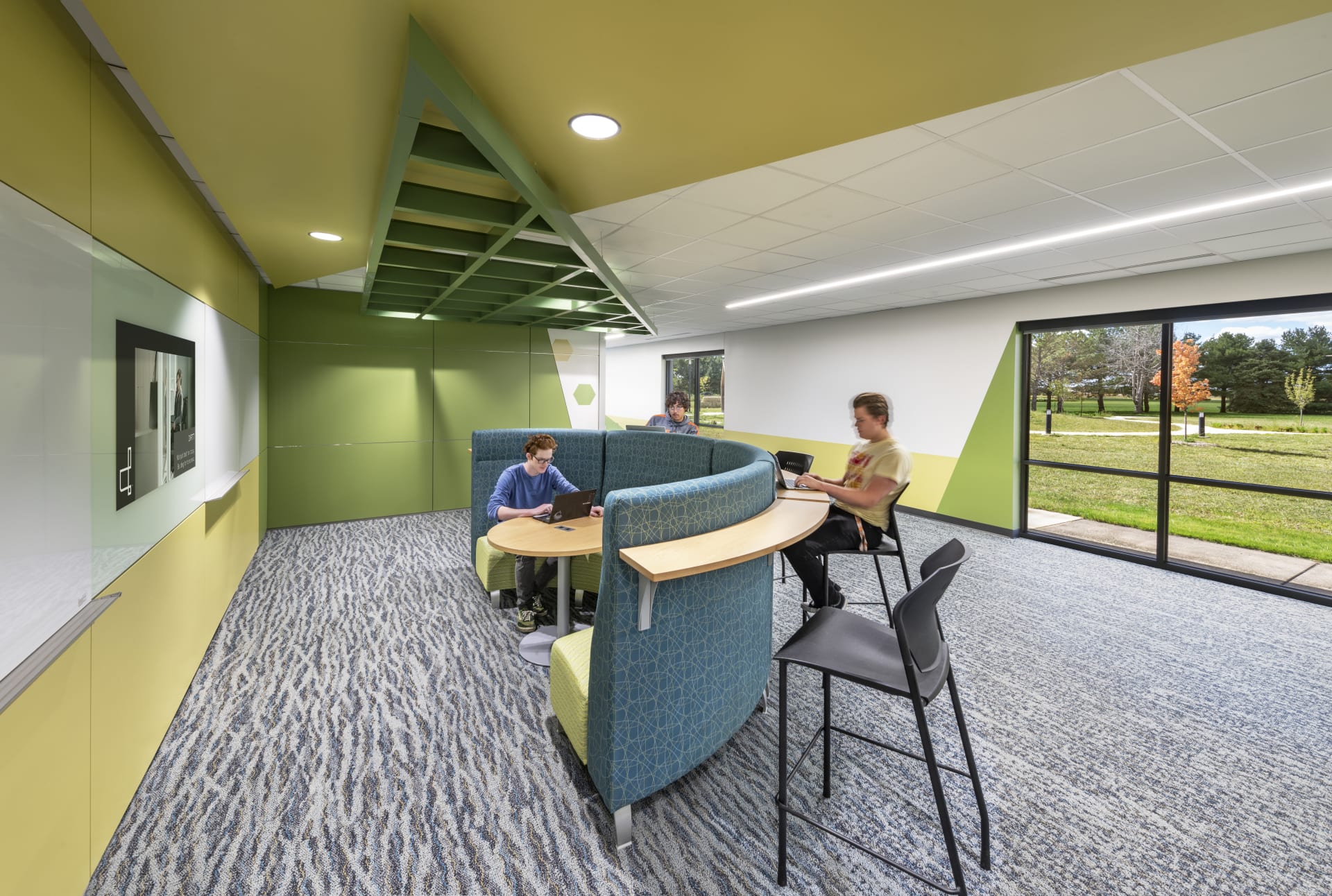Why education is embracing a faster method of construction.
Summer vacation. For students, it’s a break. But for managers in the world of education, it’s busy. Many of them are looking at the time the students are away as an opportunity to upgrade their campuses. They want to make sure downtime due to construction coincides with the weeks that students are away from school. It’s not just a way to limit disruption to the learning process. It’s also a chance to reduce lost revenue due to closure.
It’s something Nick Salmon, president of the Collaborative Learning Network knows well. “I will routinely bring up the question of: wouldn’t it be to our advantage to accelerate this construction process?” he says. “Being able to move into this building six months earlier will save us hundreds of thousands of dollars of fixed costs associated with just mobilizing people to a site.”
For that reason, there’s a big benefit to completing education construction projects as quickly as possible. But it’s not just about good planning and working quickly. Making meaningful cuts to a construction schedule is about working smart as much as it is about working hard. Salmon points to off-site construction as a meaningful way to achieve those reduced construction times. Creating interior elements of a school while the base building is being erected has the potential to save considerable time.

Leveraging existing buildings
In order to shrink construction timelines further, education facilities often look at reducing the amount of construction that has to be done. Instead of creating a whole new building shell, retrofitting an existing space will deliver a green building benefit with a schedule advantage too. Refreshing an older building, by replacing the interior with a prefabricated, modular construction system can have a considerable impact.
That’s one of the reasons the Greater Atlanta Christian School used DIRTT to make over their campus space for grades seven to 12.
“As the future unfolded, we began to ask new questions about how could this building be repurposed?” says David Fincher, president of the Greater Atlanta Christian School. “Instead of razing it, flattening it, how could we take it forward so it could serve well again in the future? That’s an interesting question, and it’s a good question for students, too, about how you take things forward instead of simply tearing things down.”
What started as an aging 70,000-square-foot cinderblock row of classrooms, became a 21st-century learning studio. Parents and students were impressed by the facelift. Fincher was impressed that even though renovations started in May they could be completed by the time students returned in early August.
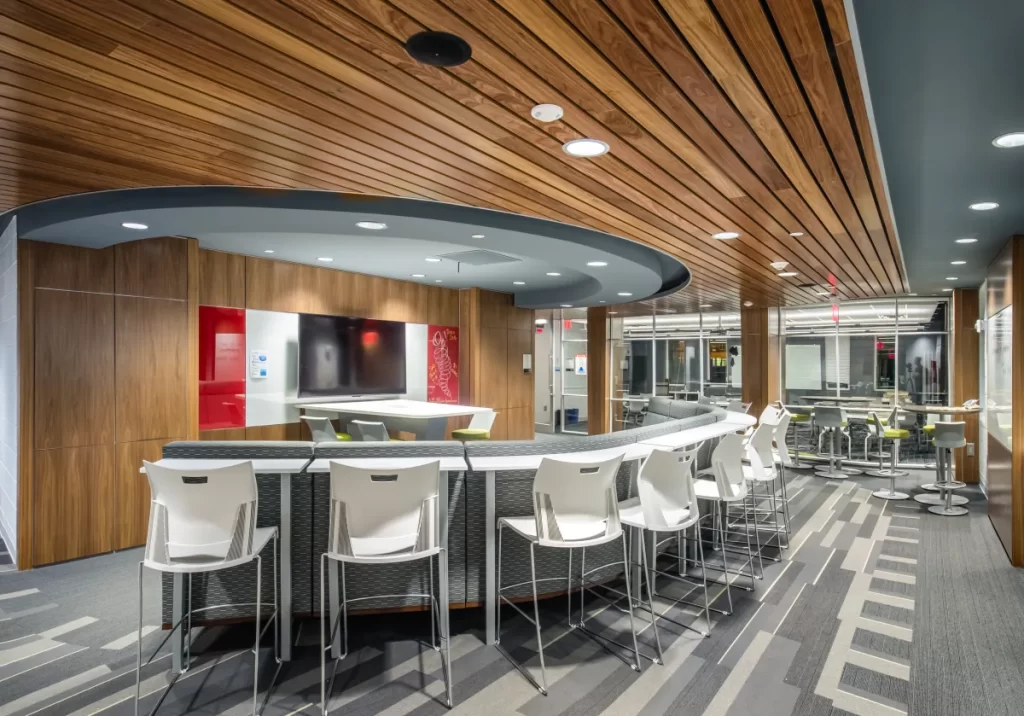
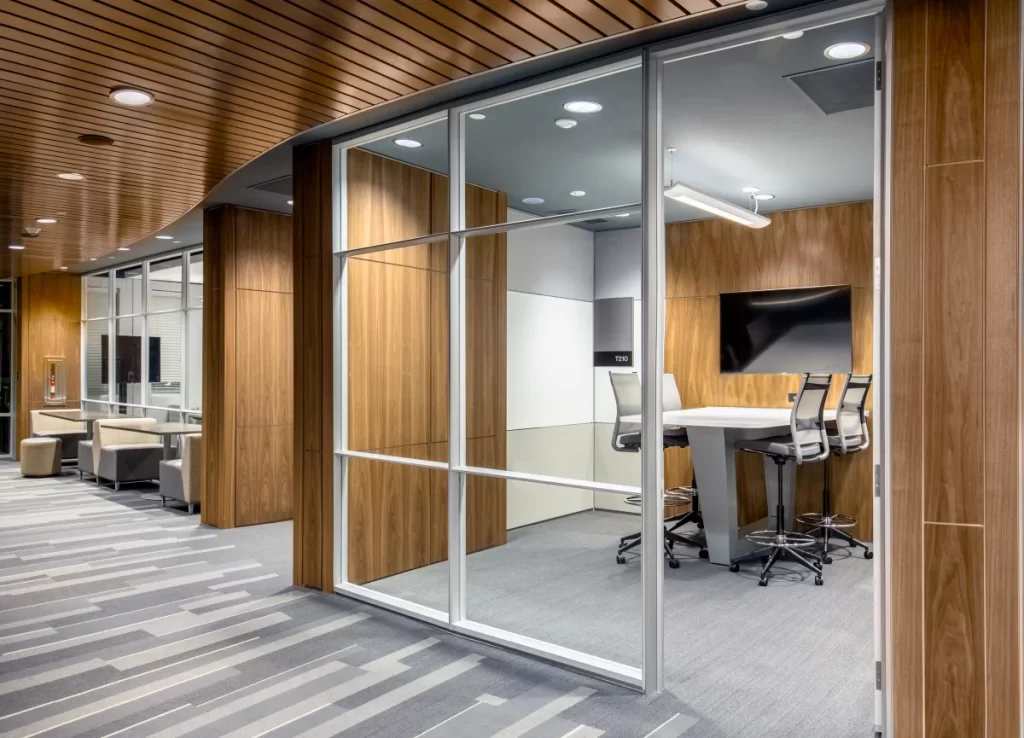
“One of the things that struck me about this project was… the speed at which it could be done compared to most of our projects,” says Fincher. I’m used to that campus where construction projects take 10, 12, 18 months. We have probably 25 buildings on this campus, and I probably oversaw the building of 20 of them. So, I know what a long time means. But it was amazing what all could be accomplished in a two-or-three-month period, really in weeks, with DIRTT that could not have been done ever in a traditional construction fashion.”
“It’s oh-so-much more than a cosmetic paint job. It’s a radical change in the way learning occurs.”
– DAVID FINCHER, PRESIDENT, GREATER ATLANTA CHRISTIAN SCHOOL
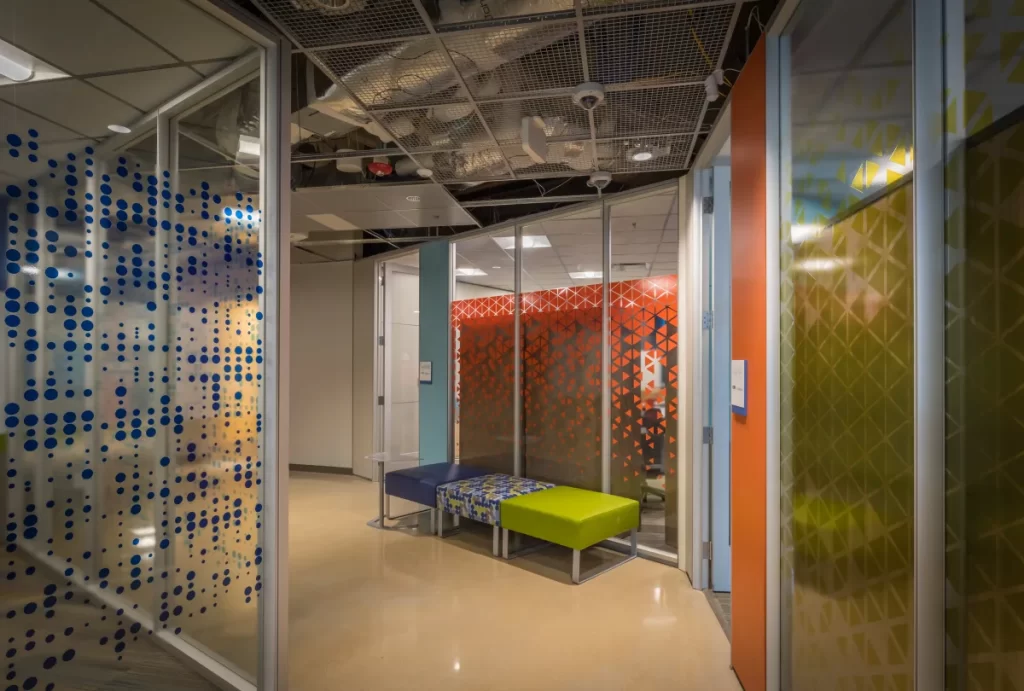
Back to school faster
The Center for Applied Science and Technology (CAST) in San Antonio, Texas wanted to create a cutting-edge space for their high school students. But it wasn’t a cutting-edge building.
“This building was constructed in 1932,” says Melissa Acolo, principal of CAST Tech High School. “It was basically gutted, but the exterior is all the original and the same. And we’ve just become a modern-day building on the interior with respect to the history and historical significance of the exterior.”
Because their approach to education is forward-thinking, they wanted to create a space that was more like a workplace than a traditional high school. Even though it wasn’t a typical education build, DIRTT helped to accelerate timelines getting students in seats for the first day of class.
“It was a 16-month project, and the construction crew was able to get it done in nine months,” she says. Because the DIRTT Construction System is responsible for an expanded scope, it reduced the number of trades on-site. That in turn sped up the process.
“It was incredible,” she says. “Just to see how well it was orchestrated and how quickly it could come in… When the walls came, and they were being put up… you could see the difference.”
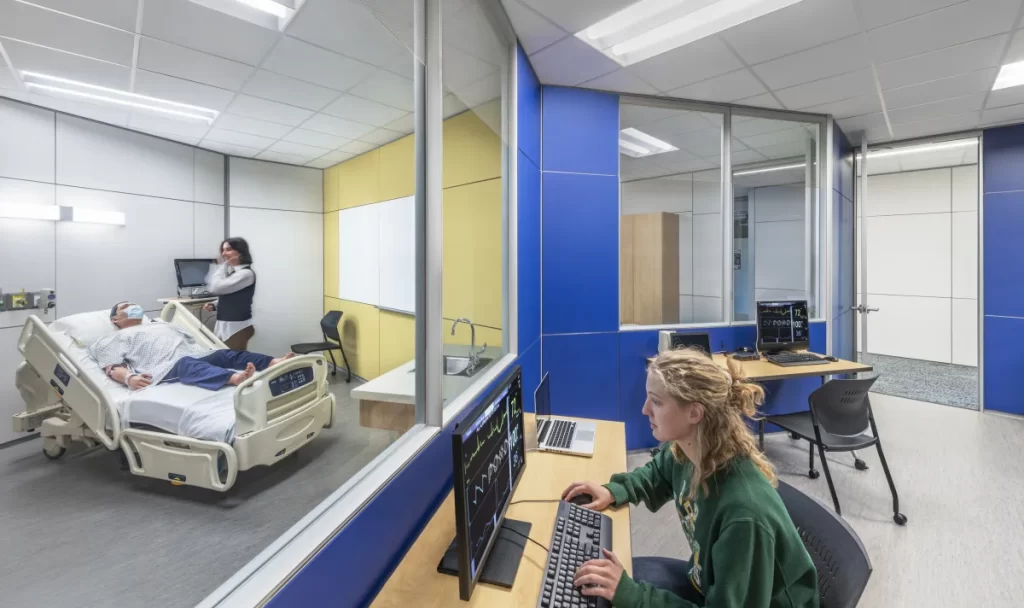
Higher Learning
The same benefits can be achieved in post-secondary spaces as well. When Richland Community College wanted to update its science labs, they knew they wanted to keep downtime to a minimum.
“We lost 15 thousand square feet of classroom space and lab space,” says Greg Florian Vice President for Finance and Administration at Richland Community College. “We had to relocate within the existing facility so shortening the construction period of that was really valuable to us.”
Maximizing their semester breaks and using the DIRTT Construction System allowed them to do that. “(We) did about 25 to 26 thousand square feet on the first floor and really only lost one semester” he says. “It’s pretty clean. It’s quiet. And it goes quickly, so we lost just a minimum construction time. That was really key to getting these spaces opened back up.”
The need for speed
As these projects show, there’s an advantage to streamlining the construction process through off-site construction.
“Not enough people are familiar with the potential of accelerating and constructing things in parallel,” says Salmon. “We’re used to a sequence where you dig in the dirt, place concrete, and then you start building from there. Then you put in doors and windows and finish the inside.”
“The idea that you could be fabricating the interior, while the concrete is being poured. Design the building in a way that you know is predictable so the elements that would come in later will fit. And that those things can be constructed very thoughtfully, with the eye on the impact on the environment. Why aren’t we doing more of that?”
